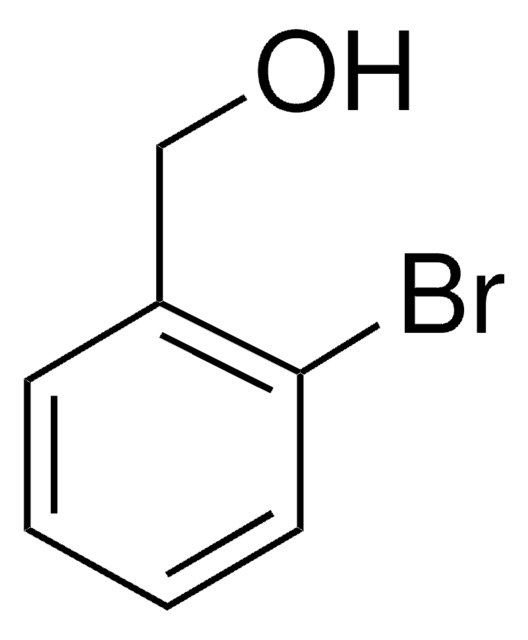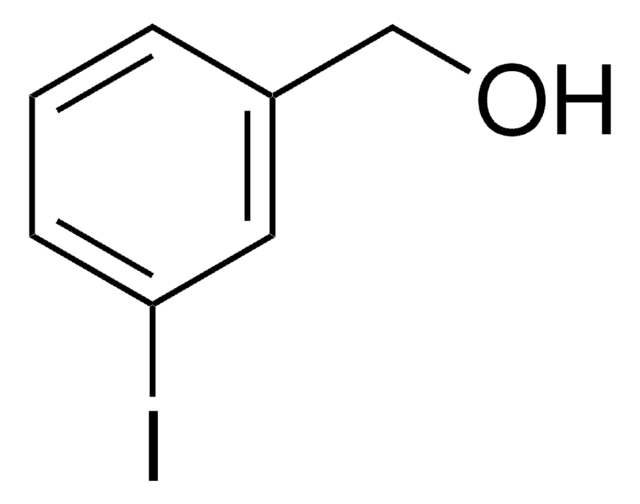187054
4-Bromobenzyl alcohol
99%
Sinónimos:
(4-Bromophenyl)methanol, (p-Bromophenyl)methanol, 1-(p-Bromophenyl)methanol, 1-Bromo-4-(hydroxymethyl)benzene, 4-Hydroxymethyl-1-bromobenzene, p-Bromobenzyl alcohol
About This Item
Productos recomendados
Análisis
99%
formulario
solid
mp
75-77 °C (lit.)
solubilidad
dioxane: soluble 1 g/10 mL, clear to faintly turbid, colorless to faintly yellow
cadena SMILES
OCc1ccc(Br)cc1
InChI
1S/C7H7BrO/c8-7-3-1-6(5-9)2-4-7/h1-4,9H,5H2
Clave InChI
VEDDBHYQWFOITD-UHFFFAOYSA-N
Información sobre el gen
human ... ALOX12(239) , ALOX15(246)
¿Está buscando productos similares? Visita Guía de comparación de productos
Categorías relacionadas
Descripción general
Aplicación
- hydroxyl end functionalized, substituted polyfluorene
- amphiphilic, symmetric rod-coil, triblock copolymer of poly(9,9-didodecylfluorene-2,7-diyl) and poly(hydroxyl ethyl methacrylate)
Frases de peligro
Consejos de prudencia
Clasificaciones de peligro
Aquatic Chronic 3
Código de clase de almacenamiento
13 - Non Combustible Solids
Clase de riesgo para el agua (WGK)
WGK 3
Punto de inflamabilidad (°F)
Not applicable
Punto de inflamabilidad (°C)
Not applicable
Equipo de protección personal
Eyeshields, Gloves, type N95 (US)
Certificados de análisis (COA)
Busque Certificados de análisis (COA) introduciendo el número de lote del producto. Los números de lote se encuentran en la etiqueta del producto después de las palabras «Lot» o «Batch»
¿Ya tiene este producto?
Encuentre la documentación para los productos que ha comprado recientemente en la Biblioteca de documentos.
Los clientes también vieron
Nuestro equipo de científicos tiene experiencia en todas las áreas de investigación: Ciencias de la vida, Ciencia de los materiales, Síntesis química, Cromatografía, Analítica y muchas otras.
Póngase en contacto con el Servicio técnico








